Knight Anole Lizard
- March 11, 2024
- 0 comment
The Knight Anole, scientifically known as Anolis equestris, is a captivating reptile species native to Cuba and introduced to certain parts of Florida. Renowned for its striking appearance and unique behaviors, the Knight Anole often captivates the attention of reptile enthusiasts and researchers alike. These lizards are notable for their large size, with adults reaching lengths of up to 18 inches, including their long tails. Sporting vibrant colors ranging from shades of green to brown, Knight Anoles boast intricate patterns or markings on their scales, adding to their allure. One of their most striking physical features is their dewlap, a colorful throat fan used in communication and display.

In terms of habitat, Knight Anoles thrive in tropical climates, favoring dense forests, gardens, parks, and wooded areas. They are carnivorous by nature, feeding primarily on insects such as crickets, grasshoppers, and beetles, as well as occasionally consuming small vertebrates like lizards and frogs. These lizards exhibit solitary behavior, maintaining their own territories within their habitat and displaying aggression towards intruders, particularly during the breeding season. Despite facing threats from habitat loss and human activity, Knight Anoles continue to thrive in both their native range and introduced areas. Understanding and appreciating the importance of conservation efforts is crucial to ensuring the long-term survival of this fascinating species.
| Specification | Description |
|---|---|
| Scientific Name | Anolis equestris |
| Common Name | Knight Anole |
| Native Range | Cuba |
| Introduced Range | Parts of Florida, United States |
| Size | Up to 18 inches (including tail) |
| Coloration | Shades of green to brown with intricate patterns or markings |
| Distinctive Feature | Dewlap – colorful throat fan used in communication and display |
| Habitat | Tropical climates; dense forests, gardens, parks, wooded areas |
| Diet | Carnivorous; primarily insects such as crickets, grasshoppers, beetles, occasionally small vertebrates like lizards |
| Behavior | Solitary; territorial; aggressive towards intruders, particularly during breeding season |
| Threats | Habitat loss, predation by introduced species, human activity |
| Conservation Status | Not currently listed as endangered, but conservation efforts are important for long-term survival |
Knight Anole Lizard, scientifically known as Anolis equestris, is a fascinating reptile species native to Cuba and introduced to certain parts of Florida. Renowned for its striking appearance and unique behaviors, the Knight Anole Lizard often captures the attention of reptile enthusiasts and researchers alike.
Physical Characteristics
The physical characteristics of Knight Anole lizards are distinctive and fascinating. Here are some key features:

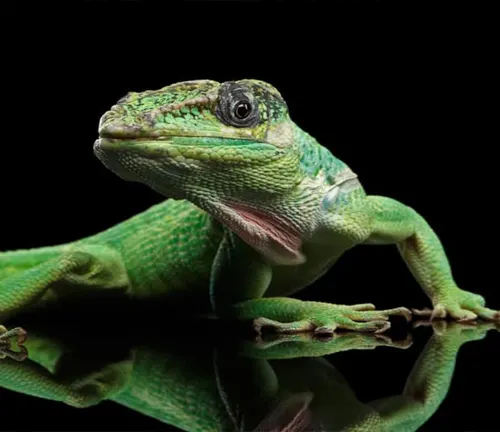
- Size: Knight Anole lizards are relatively large reptiles, with adults reaching lengths of up to 18 inches (including their tails). This substantial size contributes to their impressive presence in their natural habitat.
- Coloration: These lizards display a range of vibrant colors, which can include shades of green, brown, and even hints of blue or yellow. The coloration may vary depending on factors such as age, gender, and environmental conditions.
- Scales: Knight Anole lizards have scales covering their bodies, which provide protection and help regulate moisture levels. The scales can vary in texture and pattern, with some individuals exhibiting intricate markings or mottling.
- Head: Their heads are typically triangular in shape, with prominent eyes and a distinct snout. The eyes are often a striking shade of gold or amber and provide excellent vision for hunting and navigating their environment.
- Dewlap: One of the most striking physical features of Knight Anole lizards is their dewlap. This flap of skin located beneath their chin can be extended and displayed as a colorful throat fan during communication, territorial displays, and courtship rituals.
- Limbs: Knight Anole lizards have well-developed limbs with sharp claws, which they use for climbing, gripping surfaces, and capturing prey. Their strong limbs enable them to navigate through the dense foliage of their habitat with agility.
- Tail: Like many lizard species, Knight Anole lizards possess a long and slender tail. Their tails serve various functions, including balance, communication, and defense. In some cases, they may also be used as a distraction or decoy when threatened by predators.
Habitat and Distribution
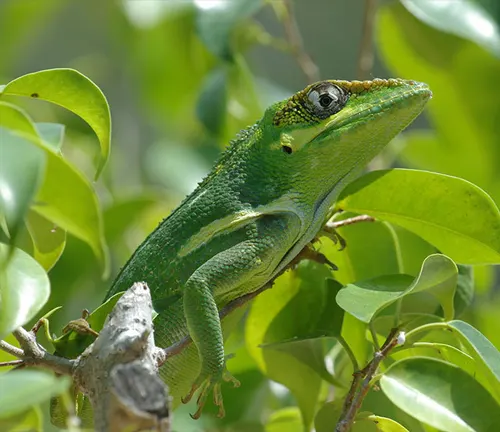

The habitat and distribution of Knight Anole lizards are closely linked to their native range in Cuba and their introduced populations in certain parts of Florida, United States.
- Native Range: Knight Anole lizards are indigenous to the island of Cuba in the Caribbean. Within Cuba, they inhabit a variety of habitats, including dense forests, wooded areas, gardens, and parks. These lizards are well-adapted to the tropical climate and lush vegetation found throughout the island.
- Introduced Range: In addition to their native range in Cuba, Knight Anole lizards have been introduced to certain regions of Florida, particularly in urban and suburban areas with suitable habitats. The introduction of these lizards to Florida is believed to have occurred through the pet trade and accidental releases.
- Preferred Environments: Knight Anole lizards thrive in tropical and subtropical environments characterized by ample vegetation and moderate temperatures. They are commonly found in areas with abundant foliage, such as trees, shrubs, and bushes, where they can climb and bask in the sunlight.
- Habitat Requirements: In both their native and introduced ranges, Knight Anole lizards require habitats that provide ample hiding spots, climbing opportunities, and access to food sources. They are arboreal creatures, meaning they spend much of their time in trees and shrubs, where they hunt for prey and seek shelter from predators.
- Distribution Challenges: While Knight Anole lizards have successfully established populations in parts of Florida, their distribution may be limited by factors such as habitat fragmentation, competition with other species, and human activity. Conservation efforts are important to monitor their spread and mitigate potential negative impacts on native ecosystems.
Diet and Feeding Habits
The diet and feeding habits of Knight Anole lizards are characteristic of their carnivorous nature and arboreal lifestyle. Here’s an overview of their dietary preferences and feeding behaviors:
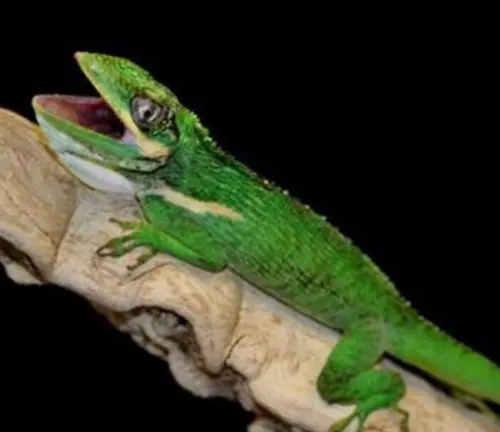
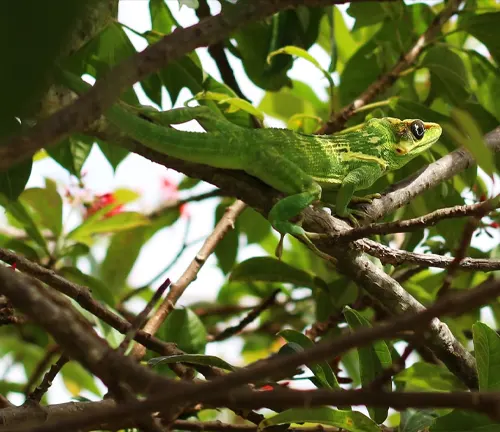
- Predatory Behavior: Knight Anole lizards are skilled hunters, relying primarily on their keen eyesight and lightning-fast reflexes to capture prey. They are opportunistic feeders, actively searching for insects and small invertebrates to consume. Their predatory behavior is essential for maintaining their energy levels and meeting their nutritional needs.
- Food Sources: In the wild, Knight Anole lizards feed on a variety of insects and invertebrates, including crickets, grasshoppers, beetles, spiders, and caterpillars. They may also consume small vertebrates such as lizards, frogs, and even smaller anoles. Their diet is diverse, reflecting the availability of prey within their habitat.
- Hunting Techniques: When hunting, Knight Anole lizards employ stealth and patience to stalk their prey. They may remain motionless for extended periods, waiting for an opportunity to strike. Once a suitable target is identified, they use their agility and speed to pounce on the prey and capture it with their sharp claws and powerful jaws.
- Feeding Frequency: Knight Anole lizards are typically active during the day (diurnal), with feeding bouts occurring intermittently throughout the daylight hours. They may consume multiple small meals throughout the day, depending on the availability of prey and their energy requirements.
- Diet in Captivity: In captivity, Knight Anole lizards can be fed a diet consisting of live insects such as crickets, mealworms, waxworms, and roaches. It’s essential to provide a varied diet to ensure they receive adequate nutrition. Additionally, supplementation with calcium and vitamin D3 may be necessary to prevent nutritional deficiencies.
- Hydration: While Knight Anole lizards obtain most of their hydration from their prey and moisture in their environment, providing access to a shallow water dish in their enclosure is important to ensure they remain adequately hydrated, especially in drier conditions.
Behavior and Social Structure
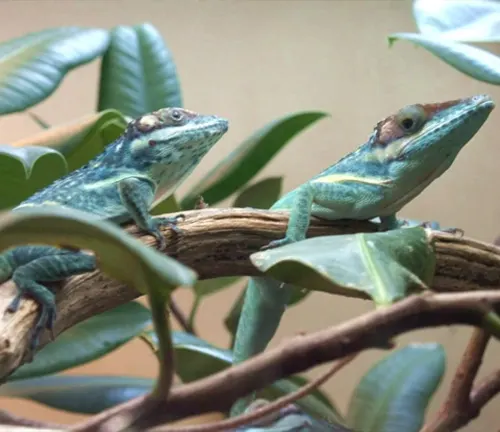

The behavior and social structure of Knight Anole lizards are fascinating aspects of their biology, shaped by their territorial nature and interactions within their habitat. Here’s an overview of their behavior and social dynamics:
- Territorial Behavior: Knight Anole lizards are solitary creatures that establish and defend territories within their habitat. They are highly territorial, particularly males, which exhibit aggressive behavior towards intruders. Territorial boundaries are often marked and defended through visual displays such as head bobbing, dewlap extensions, and body posturing.
- Mating Rituals: During the breeding season, Knight Anole lizards engage in elaborate courtship rituals to attract mates and establish reproductive success. Males may perform courtship displays involving head bobbing, dewlap extensions, and colorful throat displays to attract females. Competition among males for mating rights can be intense, leading to aggressive encounters and territorial disputes.
- Communication: Knight Anole lizards communicate with each other through a variety of visual and vocal signals. Visual displays, such as head bobbing and dewlap extensions, are used for territorial defense, courtship, and communication with other lizards. Vocalizations, including chirps and hisses, may also play a role in communication, particularly during aggressive encounters.
- Social Structure: While Knight Anole lizards are primarily solitary animals, they may tolerate the presence of conspecifics within their territory, particularly during the breeding season. However, interactions between individuals are often brief and may result in territorial disputes if boundaries are challenged.
- Hierarchy and Dominance: Within their social structure, Knight Anole lizards may establish dominance hierarchies, with larger, more dominant individuals asserting control over smaller, subordinate ones. Dominance is often determined through aggressive displays and physical combat, particularly among males competing for mates or territory.
- Parental Care: Knight Anole lizards exhibit limited parental care, with females typically laying clutches of eggs in hidden locations such as hollow trees or vegetation. Once laid, the eggs are left unattended, and hatchlings emerge after an incubation period of several weeks. Offspring are independent from birth and must fend for themselves.
- Adaptations for Survival: Knight Anole lizards have evolved various adaptations for survival in their environment, including their ability to regulate body temperature through basking behavior, their agile climbing abilities, and their efficient predatory skills. These adaptations contribute to their success as arboreal predators in their natural habitat.
Reproduction and Lifecycle
Reproduction and the lifecycle of Knight Anole lizards are intriguing aspects of their biology, characterized by distinct reproductive behaviors and developmental stages. Here’s an overview:
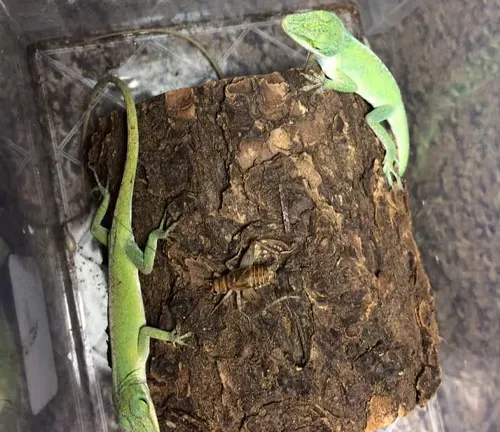
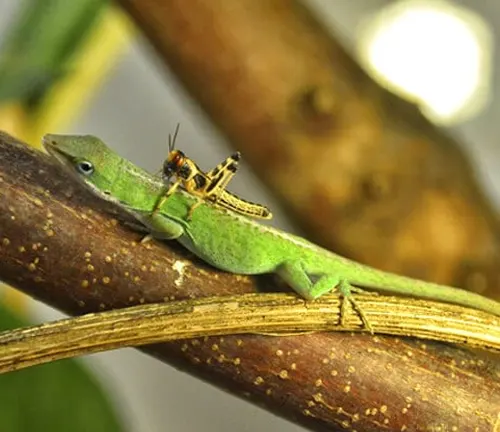
- Breeding Season: Knight Anole lizards typically breed during the warmer months of the year, when environmental conditions are optimal for reproduction. The exact timing of the breeding season may vary depending on factors such as temperature, rainfall, and photoperiod.
- Courtship Rituals: During the breeding season, male Knight Anole lizards engage in elaborate courtship rituals to attract females and establish mating rights. These rituals may involve visual displays such as head bobbing, dewlap extensions, and colorful throat displays. Competition among males for mates can be intense, leading to aggressive encounters and territorial disputes.
- Nesting Habits: After successful courtship and mating, female Knight Anole lizards seek out suitable nesting sites to deposit their eggs. These sites may include hollow trees, vegetation, or other concealed locations that provide protection and shelter for the eggs.
- Egg Laying: Female Knight Anole lizards lay clutches of eggs, which are deposited in the chosen nesting site. The number of eggs in a clutch can vary but typically ranges from several to a dozen or more, depending on factors such as the female’s size and reproductive condition.
- Incubation Period: Once laid, the eggs undergo an incubation period, during which they develop and mature within the protective confines of the nest. The length of the incubation period can vary depending on environmental conditions such as temperature and humidity but generally lasts several weeks.
- Hatchling Emergence: After the incubation period, the eggs hatch, and the hatchlings emerge from the nest. Newly hatched Knight Anole lizards are miniature replicas of adults, albeit with a smaller size and less developed features. They are independent from birth and must fend for themselves in their natural habitat.
- Offspring Care: Knight Anole lizards exhibit limited parental care, with females providing no direct care for their offspring beyond egg deposition. Once hatched, the hatchlings are left to navigate their environment and search for food independently. Survival during the early stages of life depends on their ability to avoid predators and locate suitable prey.
- Life Cycle: As Knight Anole lizards mature, they undergo various developmental stages, including growth, molting, and sexual maturation. With proper care and environmental conditions, they can reach adulthood within a few years and contribute to the reproductive cycle by mating and producing offspring of their own.
Threats and Conservation Status
The threats and conservation status of Knight Anole lizards are important considerations for understanding their vulnerability and implementing measures to protect their populations. Here’s an overview:
- Human Impact: One of the primary threats to Knight Anole lizards is habitat loss and degradation due to human activities such as urbanization, deforestation, and agricultural expansion. The destruction of their natural habitat can fragment populations, disrupt migration patterns, and reduce the availability of suitable breeding and foraging sites.
- Invasive Species: Knight Anole lizards face competition and predation from invasive species introduced to their habitats. In particular, invasive predators such as rats, cats, and snakes can prey on Knight Anole lizards and their eggs, leading to declines in population numbers.
- Climate Change: Climate change poses additional challenges for Knight Anole lizards, affecting their habitat suitability, reproductive success, and distribution. Rising temperatures, altered precipitation patterns, and extreme weather events can disrupt breeding cycles, impact food availability, and increase the frequency of habitat disturbances.
- Pollution: Pollution from agricultural runoff, urban runoff, and industrial activities can contaminate water sources and degrade the quality of Knight Anole lizard habitats. Exposure to pollutants such as pesticides, heavy metals, and chemical contaminants can have detrimental effects on their health and reproductive success.
- Conservation Status: While Knight Anole lizards are not currently listed as endangered, their populations may be declining in certain areas due to the aforementioned threats. Conservation efforts are crucial to mitigate these threats and ensure the long-term survival of the species.
- Conservation Measures: Conservation efforts for Knight Anole lizards may include habitat restoration, protected area management, invasive species control, and public education and outreach. Collaborative initiatives involving government agencies, conservation organizations,
researchers, and local communities are essential for implementing effective conservation strategies. - Monitoring and Research: Continued monitoring and research are necessary to assess population trends, identify priority conservation areas, and understand the ecological requirements of Knight Anole lizards. Long-term studies can provide valuable insights into their habitat use, behavior, and response to environmental changes.
Interesting Facts and Trivia
- Knight Anole Lizards possess remarkable camouflage abilities, allowing them to blend seamlessly into their surroundings.
- Some individuals have been documented reaching lengths of over 20 inches, making them one of the largest species of anoles.
- These lizards are highly adaptable and can thrive in a variety of habitats, from urban environments to pristine forests.
Different Species
Green Anole
(Anolis carolinensis)
Also known as the Carolina Anole, this species is native to the southeastern United States and is often found in gardens, forests, and urban areas. Green Anoles are typically smaller than Knight Anoles and are known for their ability to change color from green to brown.

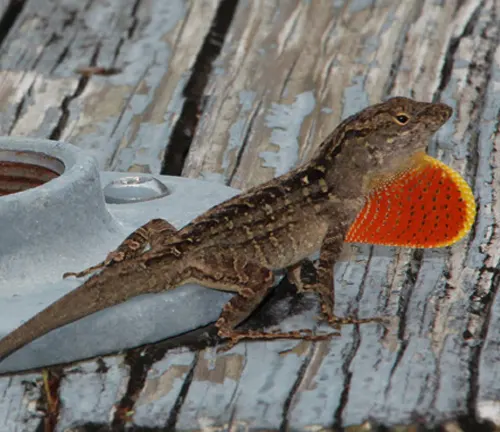
Cuban Brown Anole
(Anolis sagrei)
Native to Cuba and the Bahamas, the Cuban Brown Anole has been introduced to various regions, including Florida. They are adaptable lizards that can thrive in a variety of habitats and are known for their territorial behavior and aggressive interactions with other lizards.
Jamaican Giant Anole
(Anolis garmani)
Found in Jamaica, the Jamaican Giant Anole is one of the largest species within the Anolis genus. They have a robust build and are known for their powerful jaws. Despite their size, they are agile climbers and often inhabit trees and shrubs.
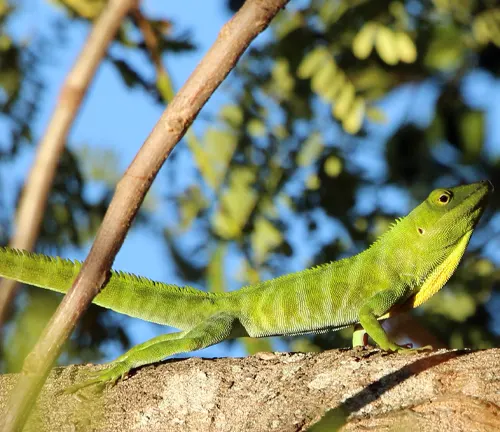
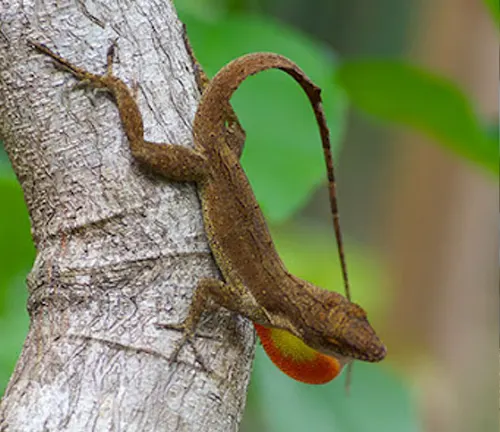
Crested Anole
(Anolis cristatellus)
Native to Puerto Rico and the Virgin Islands, the Crested Anole is known for the crest of skin along its neck and back. They are arboreal lizards that can often be found basking in the sun on tree branches.
Hispaniolan Green Anole
(Anolis chlorocyanus)
Endemic to the Caribbean island of Hispaniola, which comprises the countries of Haiti and the Dominican Republic, the Hispaniolan Green Anole is known for its vibrant green coloration and arboreal lifestyle.
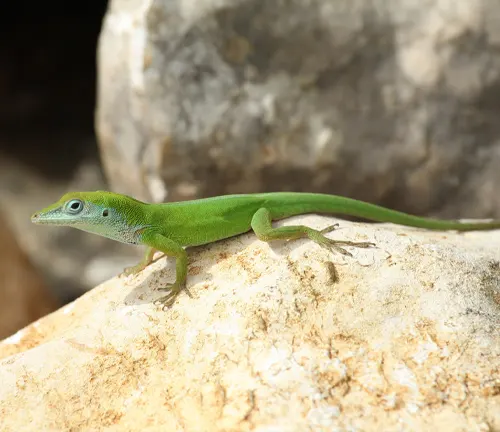
Frequently Asked Questions (FAQs)
- How long do Knight Anole lizards live?
On average, Knight Anole lizards can live for around 5 to 10 years in captivity with proper care. However, their lifespan in the wild may vary depending on factors such as predation, habitat conditions, and environmental stressors. - Do Knight Anole lizards require special lighting in their habitat?
Yes, Knight Anole lizards require UVB lighting in their habitat to simulate natural sunlight and aid in vitamin D synthesis. UVB lighting helps maintain proper calcium metabolism and overall health in these reptiles. - Can Knight Anole lizards be housed together in the same enclosure?
While Knight Anole lizards are solitary by nature and may exhibit territorial behavior, some experienced keepers have successfully housed compatible individuals together in large enclosures with ample space and hiding spots. However, aggression and territorial disputes can still occur, so careful monitoring is essential. - How often do Knight Anole lizards shed their skin?
Knight Anole lizards shed their skin periodically as they grow. Juveniles may shed more frequently than adults, with shedding occurring every few weeks to months. Proper humidity levels and hydration are crucial to facilitate healthy shedding. - Are Knight Anole lizards good climbers?
Yes, Knight Anole lizards are excellent climbers and spend much of their time in trees and shrubs in their natural habitat. They have specialized toe pads with adhesive lamellae that enable them to grip onto surfaces and navigate vertical terrain with ease. - Do Knight Anole lizards require a water source in their enclosure?
Yes, Knight Anole lizards require access to fresh water for drinking and hydration. Providing a shallow water dish or misting the enclosure regularly can help maintain adequate humidity levels and ensure the lizards remain hydrated. - How do Knight Anole lizards communicate with each other?
Knight Anole lizards communicate through a variety of visual and vocal signals. Visual displays such as head bobbing, dewlap extensions, and body posturing are commonly used for territorial defense, courtship, and communication with other lizards. - Can Knight Anole lizards regrow their tails if they lose them?
Yes, like many lizard species, Knight Anole lizards have the ability to regenerate lost tails. This process, known as autotomy, allows them to detach their tails as a defense mechanism against predators. The regenerated tail may not be as long or symmetrical as the original, but it serves as a functional appendage. - Do Knight Anole lizards hibernate during colder months?
Knight Anole lizards do not hibernate in the traditional sense. Instead, they may undergo periods of reduced activity and decreased metabolism during cooler temperatures. In regions with mild climates, they may remain active year-round, while in colder areas, they may seek shelter to avoid extreme temperatures.


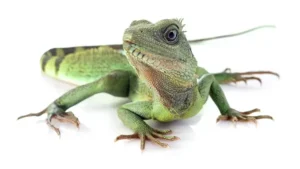

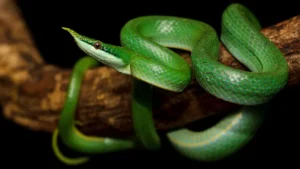
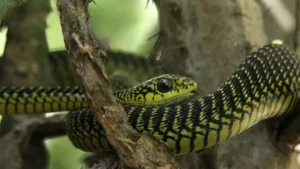
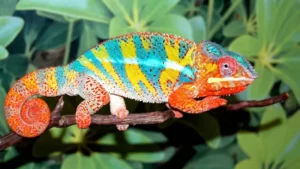
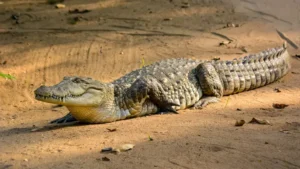
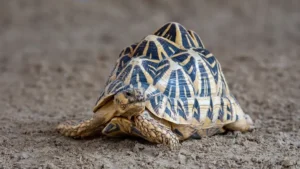
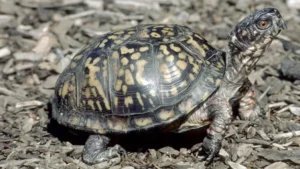
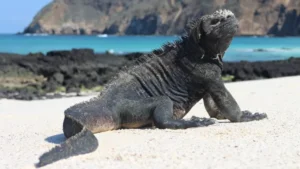
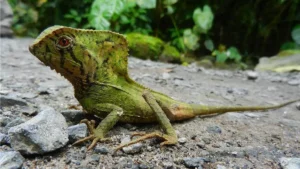

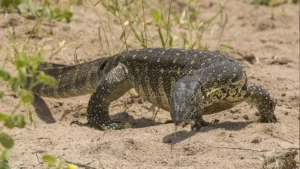
Leave your comment